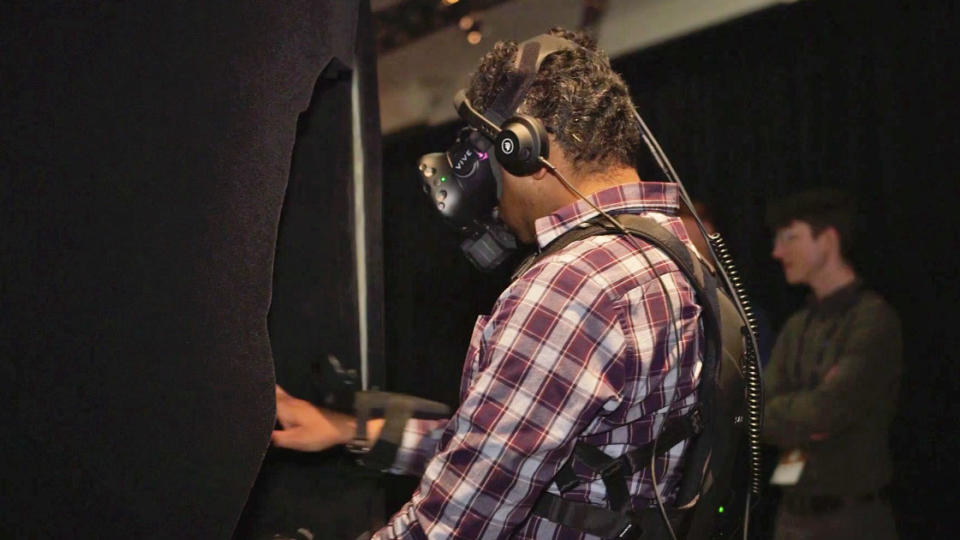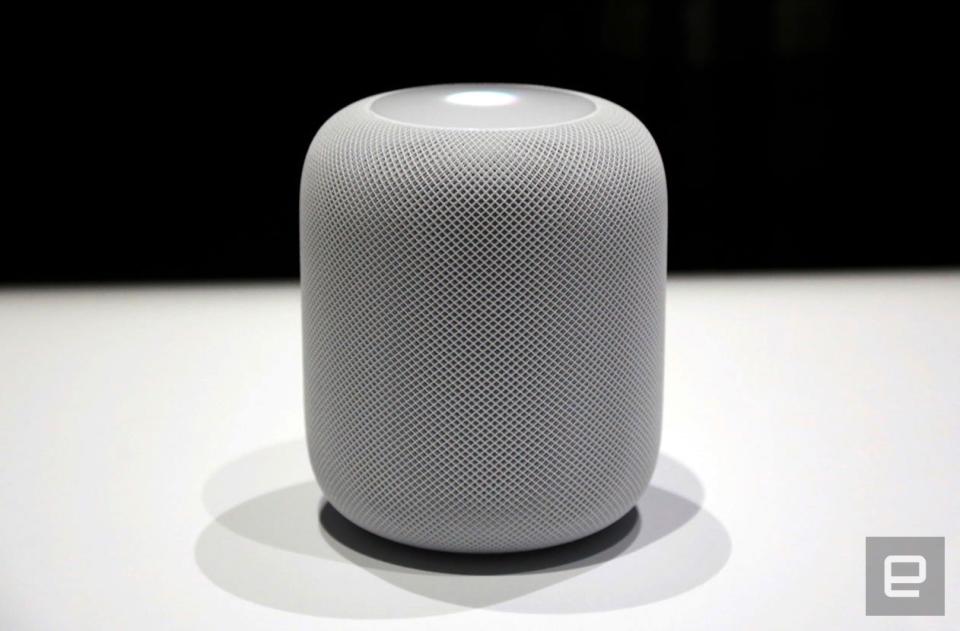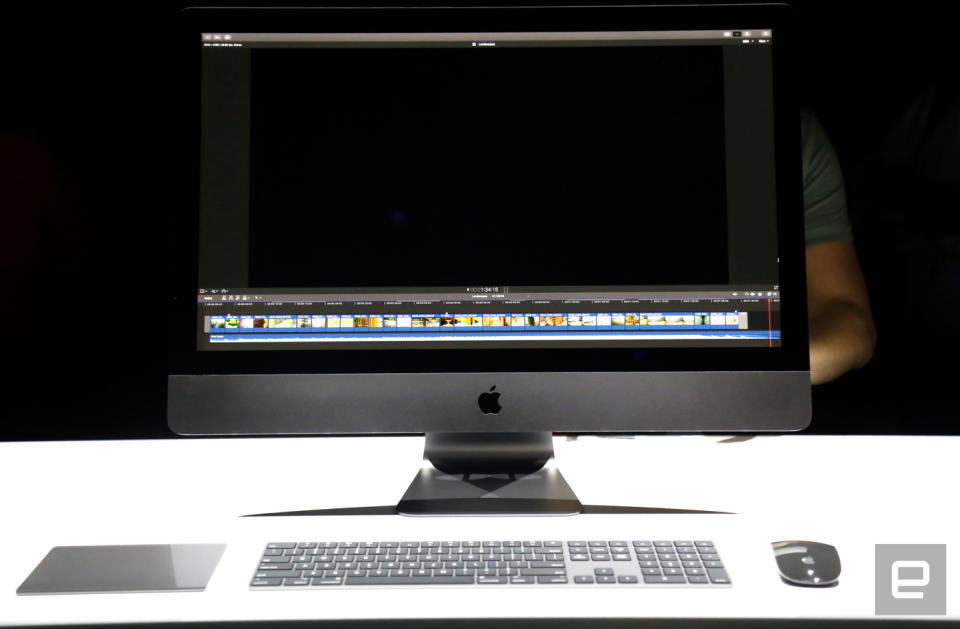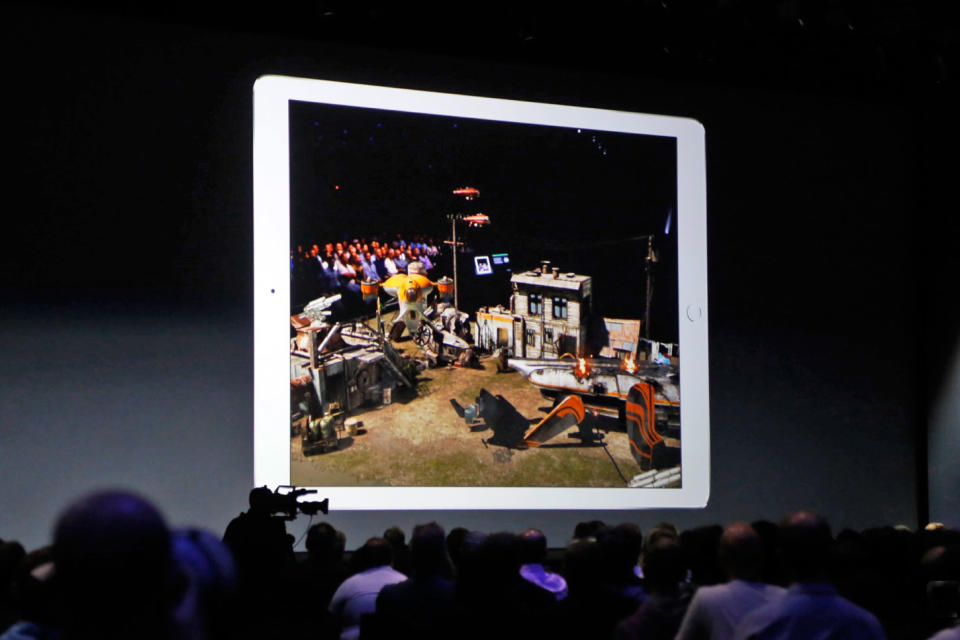Apple is the perfect anti-VR test case
Imagine a VR headset built just for the iPhone. Yeah, we can't either.
Apple shined a dull spotlight on virtual reality during its WWDC keynote yesterday, introducing VR support for macOS and a beefed-up, VR-capable version of the new iMac. This marks Apple's first real dive into VR, and, honestly, it's too little, too late. The potential of modern VR has been looming over the technology industry for nearly five years now, exciting consumers and prompting plenty of companies to develop their own support systems and hardware for this strange new virtual world.
But until yesterday, it was impossible to natively develop or even run VR experiences on an Apple machine. The first instance of built-in VR support for macOS developers comes about a year after Google, Facebook, Samsung, HTC and Sony actually put their VR headsets on stores shelves, and Apple hasn't hinted that it's working on any proprietary hardware.
Apple's nod to VR, one year late, feels like a lackluster reaction to an evolving industry rather than a prescient foray into a new and thrilling technological landscape. It feels a lot like Apple doesn't believe in VR.
On the surface, it would make a lot of sense for Apple to build something like the Google Daydream headset for mobile VR. After all, Apple makes the iPhone, and it loves selling ridiculous mobile accessories. However, the company has never expressed an interest in this space -- a move that also makes a lot of sense, on the surface.
VR is not pretty. This is one of its main roadblocks to becoming a mainstream consumer product: VR headsets are ugly, unwieldy and unglamorous. While companies like Google and Samsung seem willing to experiment with design on a public scale, Apple is notoriously protective of its image. Apple products are neurotically designed to be clean and elegant, and every new iPhone, iMac and Macbook is revealed to the world with breathless, detailed wonder, bordering on worship. Even Apple stores are pristine white boxes.

From a design perspective, VR is the antithesis of everything Apple. It has too many wires, too many straps and not enough form factor. In essence, it's too easy to look like an asshole while wearing a VR headset. That's not exactly the look Apple is going for.
And then there's the tech itself. Apple has dabbled in VR content creation, but the company's focus is fractured in a dozen different directions. While Apple CEO Tim Cook has apparently opted to let the VR wave wash over him, he's juggling the company's forays into artificial intelligence, self-driving-car technology and the IoT market. And, frankly, Apple isn't exactly a leader in any of these spaces, either.
Google, for example, is gung-ho on the promises of AI, and it's already making huge strides in this space. At its I/O developer conference in late May, Google revealed a swath of projects that leverage the latest advances in AI, and the company has published more than 700 research papers on machine intelligence alone.
Apple published its first AI research paper in December.
Apple's plans to build self-driving-car technology are vague, at best, and its connected home speaker, HomePod, isn't due until December. That's two-and-a-half years after the launch of the Amazon Echo, and one year after Google Home. And the IoT space is where AI research really comes in handy -- connected speakers use natural language processing and other machine-learning tricks to answer questions, set reminders and play media. It's notable that Apple didn't publicly demonstrate HomePod when it revealed the device yesterday, instead relying on slides and animated images to explain its features. Plus, Apple is positioning the HomePod as a speaker first and an assistant second. Both of these moves suggest Apple's AI skills aren't quite up to snuff. But, hey, at least the HomePod sounds good.

If Apple is behind in AI, it could easily place the company behind in the IoT, self-driving and VR markets. It could also put Apple behind in terms of augmented reality.
And this is where Apple sees a ray of sunshine: AR. At WWDC, Apple took time to emphasize AR, announcing a new developer platform just for projects that blend digital images with the real world. ARKit will roll out with iOS 11 in the fall, and since it will then theoretically be available on every iPhone and iPad in existence, it'll immediately become the world's largest AR platform.
This is where the future is heading, according to Apple. It's all about AR, not VR.
"My own view is that augmented reality is the larger of the two, probably by far, because this gives the capability for both of us to sit and be very present talking to each other but also have other things visually for both of us to see," Cook said in September.
AR requires a hefty amount of back-end AI work as well, and Apple isn't oblivious. Over the past year, alongside the publication of its first AI research paper, Apple acquired the AI companies Turi and Lattice Data, hired a Carnegie Mellon AI expert and started working on a mobile processor capable of powering AI. And Siri, Apple's digital assistant, has been running on AI systems since 2011.

Even with these footholds in the wide world of machine learning, it still feels like Apple is playing catch-up. VR is perhaps the most obvious example of something that looks a lot like a scramble, because it's a clear hole in the company's repertoire.
However, skipping VR could simply turn out to be a savvy business move. Cook isn't alone in thinking AR will eventually replace or become more valuable to society than VR, and initial headset sales have been a bit underwhelming (though Sony's PlayStation VR definitely found an early audience).
Ignoring VR isn't a sign that Apple is on the wrong path, but it's a notable market for the company to miss. What matters more is why Apple doesn't care about VR -- that answer will determine whether skipping the craze is a clever business move or a crippling fumble brought on by lack of foresight.
Get all the latest news from WWDC 2017 here!

















